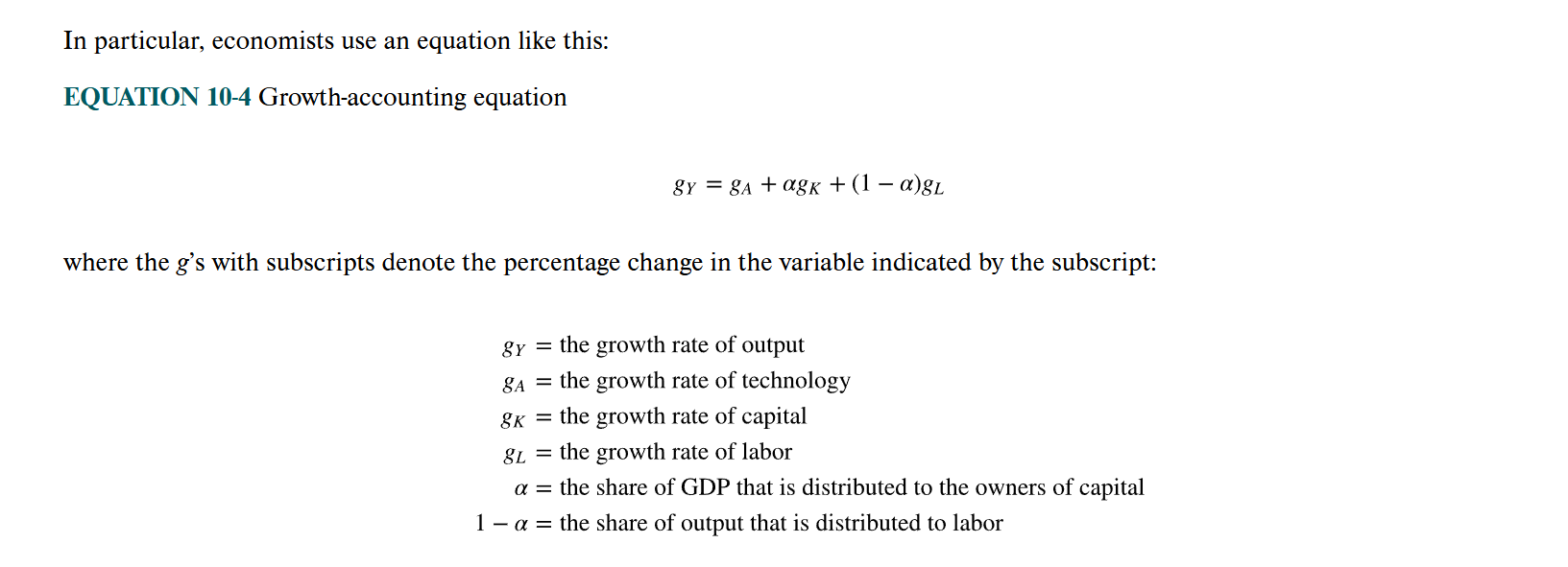Chapter 10: Economic Growth (Macro)
1/20
There's no tags or description
Looks like no tags are added yet.
Name | Mastery | Learn | Test | Matching | Spaced |
|---|
No study sessions yet.
21 Terms
productivity
output produced per worker
What is another word for GDP per capital?
Output per person on a country level
What is a country’s standard of living determined by?
It is determined by the average productivity of its people?
What causes the increase in economic productivity?
Increase in productivity per person lead to increases in per capita income which leads to economic growth
Factors that determine productivity
Physical Capital
Human Capital
Natural Resources
Technology
physical capital
The tangible assets, such as machinery, equipment, buildings, tools, and other infrastructure, that are used in the production of goods and services to enhance productivity and efficiency
human capital
skills, knowledge, experience, talent of a worker
Natural Resources
inputs that come from earth
Technological improvements
innovations that improve efficiency
Renewable Resources
Resources that can be replenished over time. Replanting a cut-down tree.
Nonrenewable Resources
Resources that can’t be replenished. Ex: Coal, oil, gold, etc.

Accounting For Growth Formula
gA + α gK + (1 - α)gL
convergence theory (catchup effect)
the theory that countries that start out poor will initially grow faster than rich ones but will eventually converge to the same growth rate
Will developing economies, who are rapidly growing have the same income level as a 1st world nation?
They will converge to the same growth rate, but not the same income level.
Investment trade-off
a reduction in current consumption to pay for investment in capital intended to increase future production.
What factors promote economic growth?
It can be domestic savings (from households saving money in a bank, corporations using profits, government generating surpluses)
Foreign direct investment (FDI): a firm runs part of its operations abroad or invests in another company.
What are some benefits or costs to FDI (Foreign Direct Investment)?
Benefits:
For host countries: Capital inflows, technology transfer, job creation, skills development, enhanced exports, tax revenue, increased competition and efficiency.
For home countries: Investment returns, better market access abroad, access to resources and cheaper inputs.
Costs:
For host countries: Profit repatriation abroad: Earnings may flow back to home country rather than being reinvested locally, crowding out of domestic firms, reduced economic sovereignty, potential environmental/labor exploitation, capital flight risk during crises.
For home countries: Domestic job losses from offshoring, erosion of manufacturing base, reduced tax revenues.
Bottom line: The net impact depends on the type of FDI, host country policies, and how well foreign investment integrates with the local economy.
How could government promote economic growth?
• Increased government spending to directly contribute to the economy.
• Education and health: high quality education to children and good healthcare to increase human capital.
• Infrastructure and industrial policy: investing in infrastructure and aiding industries which contribute most to economic growth.
• Technological advancement: providing funding for more research and development.
Poverty Trap
The poorer the country, the harder the trade-off
According to the rule of 70, a country’s real GDP will DOUBLE if it grows at an average of… for every 35 years
2%
According to the rule of 70, a country’s real GDP will DOUBLE if it grows at an average of… for every 20 years
3.5%